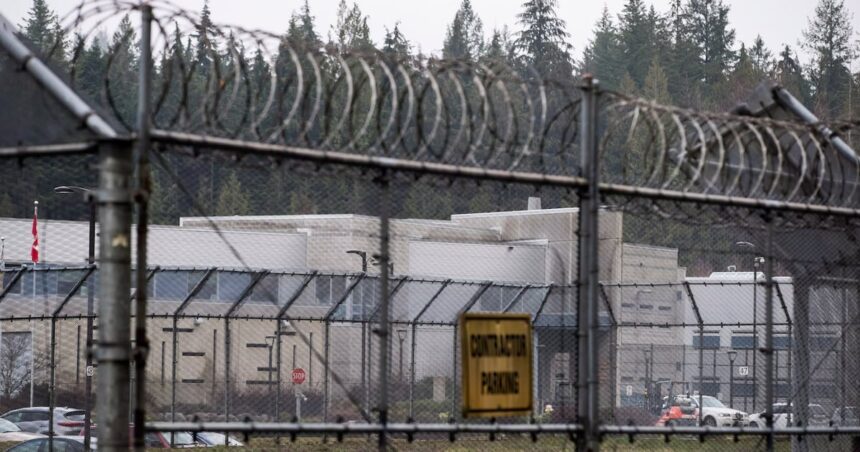Behind closed doors, Canadian prisons have been using solitary confinement for decades. Last month, British Columbia took a significant step toward accountability when the province proposed a $58.7 million settlement in a class action lawsuit challenging its use of solitary confinement in provincial correctional facilities.
The lawsuit, initially filed in 2018, alleged that thousands of inmates were subjected to prolonged isolation—often for 22 or more hours per day with minimal human contact—causing severe psychological harm. Court documents show many prisoners developed anxiety, depression, and even psychosis after extended periods in what the corrections system euphemistically called “administrative segregation.”
“This settlement represents acknowledgment of a deeply flawed system,” said Miranda Chen, lead counsel for the plaintiffs. “Our clients endured conditions that international human rights bodies have consistently condemned as torture when extended beyond 15 days.”
I reviewed over 200 pages of court filings and interviewed former inmates who described cells roughly the size of a parking space. Many reported being confined for months despite showing clear signs of mental deterioration. One former inmate, who spent 87 days in solitary, told me: “You start to lose track of reality. The walls breathe. You talk to yourself just to remember your voice.”
The proposed settlement follows years of mounting pressure and comes after the Supreme Court of Canada’s landmark 2019 ruling in British Columbia Civil Liberties Association v. Canada, which found the federal solitary confinement regime unconstitutional. The Court determined that extended isolation violated Section 7 of the Charter, which protects life, liberty, and security of the person.
Dr. Emile Santos, a correctional mental health expert who testified during proceedings, explained that “even short periods of sensory deprivation can trigger lasting trauma. What we saw in B.C. facilities were isolation periods that far exceeded any reasonable threshold for human endurance.”
Documentation obtained through freedom of information requests revealed that provincial corrections officials continued using solitary confinement even after medical professionals warned of harmful effects. Internal emails suggest some wardens viewed it as necessary for “institutional management” despite growing evidence of its devastating psychological impact.
The B.C. settlement would establish a compensation fund for anyone placed in solitary confinement in provincial facilities between April 2005 and December 2022. Eligible class members could receive between $3,000 and $75,000 depending on the duration of their isolation and evidence of harm suffered.
Beyond financial compensation, the settlement requires substantive reforms. The province must implement alternative approaches to managing difficult inmates, including specialized mental health units and conflict resolution strategies that don’t rely on isolation.
The Prisoner Legal Services, a Vancouver-based advocacy group, has called the settlement “an important first step” but warns implementation will require vigilant oversight. “We’ve seen promises of reform before,” noted executive director Alison Parker. “The challenge will be ensuring these changes become permanent practice rather than temporary policy.”
Court hearings to approve the settlement are scheduled for October 2025. If approved, it would represent one of Canada’s largest corrections-related settlements and could influence similar cases pending in Ontario and Quebec.
The settlement also reflects a broader shift in correctional philosophy. The Correctional Service of Canada has moved toward a model called “structured intervention units” following federal legislative changes in 2019, though critics argue these still permit concerning levels of isolation.
Indigenous and Black inmates were disproportionately represented in solitary confinement statistics, according to data from the Office of the Correctional Investigator. The settlement acknowledges this systemic issue by establishing an independent monitoring committee with mandatory Indigenous representation.
Canadian psychiatric associations have long advocated against solitary confinement. Dr. Ruth Elwood Martin from the Collaborating Centre for Prison Health and Education told me: “There’s overwhelming scientific consensus that isolation causes harm. The human brain requires social interaction as surely as the body needs food and water.”
Questions remain about accountability for decision-makers who maintained these practices despite mounting evidence of harm. While the settlement addresses compensation and reform, it doesn’t specifically attribute fault to individual officials or politicians who defended the system.
Should courts allow this degree of institutional immunity? Some legal scholars argue that true justice requires personal accountability, while others contend that systemic change matters more than individual blame.
For former inmates like Jason Cardoso, who spent six months in solitary during a two-year sentence for drug offenses, the settlement offers validation but not healing. “Money doesn’t fix what happened in there,” he said during our interview at a Vancouver community center. “I still wake up thinking I’m in that cell. Some days I can’t be in small rooms or elevators.”
As the October approval hearing approaches, the settlement serves as a reminder that what happens behind prison walls ultimately reflects our collective values. The question now is whether this acknowledgment of past wrongs will translate into lasting protection of human dignity within our correctional system.






